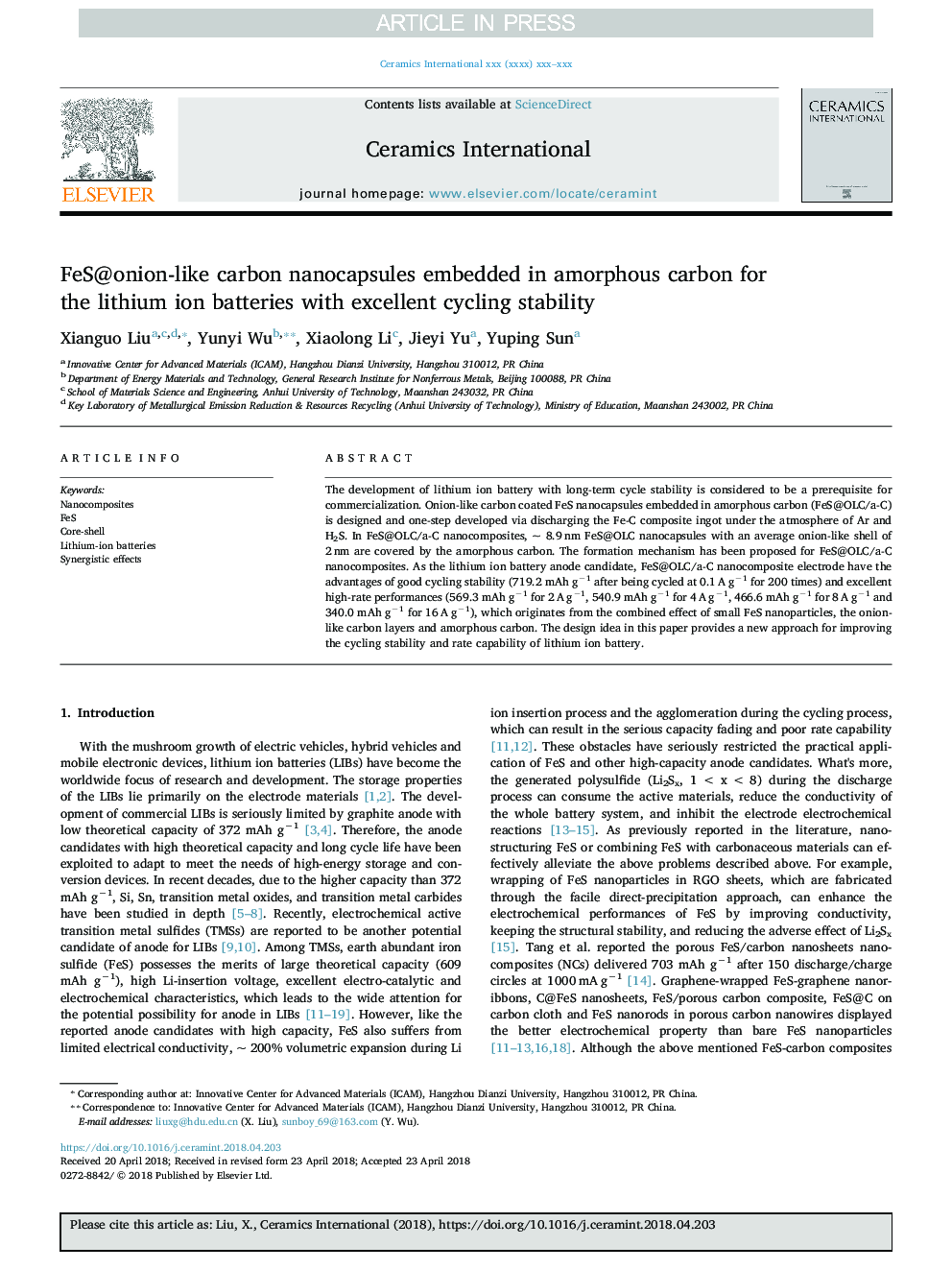| Article ID | Journal | Published Year | Pages | File Type |
|---|---|---|---|---|
| 7886375 | Ceramics International | 2018 | 8 Pages |
Abstract
The development of lithium ion battery with long-term cycle stability is considered to be a prerequisite for commercialization. Onion-like carbon coated FeS nanocapsules embedded in amorphous carbon (FeS@OLC/a-C) is designed and one-step developed via discharging the Fe-C composite ingot under the atmosphere of Ar and H2S. In FeS@OLC/a-C nanocomposites, ~ 8.9â¯nm FeS@OLC nanocapsules with an average onion-like shell of 2â¯nm are covered by the amorphous carbon. The formation mechanism has been proposed for FeS@OLC/a-C nanocomposites. As the lithium ion battery anode candidate, FeS@OLC/a-C nanocomposite electrode have the advantages of good cycling stability (719.2 mAh gâ1 after being cycled at 0.1â¯Aâ¯gâ1 for 200 times) and excellent high-rate performances (569.3 mAh gâ1 for 2â¯Aâ¯gâ1, 540.9 mAh gâ1 for 4â¯Aâ¯gâ1, 466.6 mAh gâ1 for 8â¯Aâ¯gâ1 and 340.0 mAh gâ1 for 16â¯Aâ¯gâ1), which originates from the combined effect of small FeS nanoparticles, the onion-like carbon layers and amorphous carbon. The design idea in this paper provides a new approach for improving the cycling stability and rate capability of lithium ion battery.
Related Topics
Physical Sciences and Engineering
Materials Science
Ceramics and Composites
Authors
Xianguo Liu, Yunyi Wu, Xiaolong Li, Jieyi Yu, Yuping Sun,
